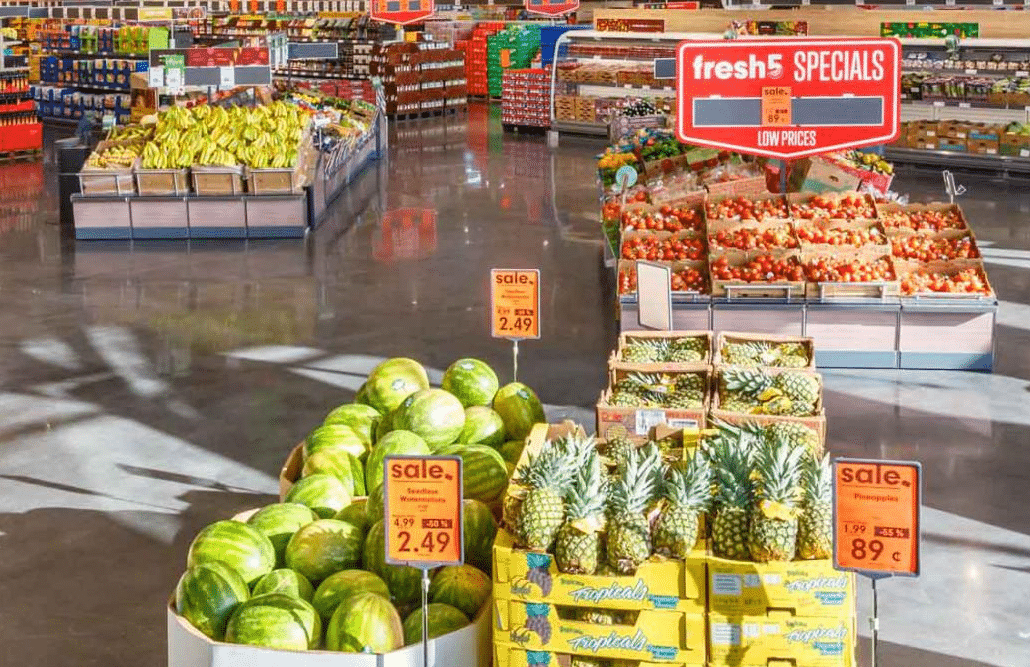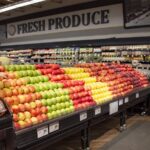With grocery prices still pressuring our budgets, shoppers are getting a lot more choosy – not only with what they buy, but where they buy it, and how long they spend doing it. And a new report says stores that you might think are gaining more business, are actually seeing more shoppers head elsewhere instead.
The location analytics company Placer.ai analyzed foot traffic data to determine some of the major trends it says are shaping the grocery industry this year. Some of those trends involve smaller stores with a limited selection, fewer but longer shopping trips, and a realignment in where cash-strapped shoppers prefer to get their groceries.
One place grocery shoppers are visiting less, is the grocery store. From June of last year through April of this year, Placer.ai found that foot traffic to traditional grocery stores has been down year-over-year. That’s particularly true of “higher-priced fresh format grocers” like the Fresh Market and Natural Grocers. “It seems,” Placer.ai’s report reads, “that during periods of high food inflation, consumers are likely to favor value-priced supermarkets to the detriment of more quality-focused grocery retailers.”
What kind of value-priced supermarket, though? Superstores like Walmart are seen as more affordable alternatives for many shoppers, and a place you’d think budget-minded shoppers would be headed. But foot traffic to these bigger, albeit less expensive, stores has dropped each month as well. As for dollar stores, you can pick up some groceries there, though they aren’t always the best place to meet all of your grocery shopping needs. Traffic has fluctuated there, up some months and down some others.
The grocery winners appear to be limited-assortment discount grocers like ALDI and Lidl. Neither accepts manufacturer’s coupons, or has big weekly sales to the extent that their larger rivals do. But that’s not a turnoff to many shoppers, since these stores “tend to favor their private-label brands and carry a relatively restrained product selection, which allows them to reduce overhead costs and transfer these savings directly to shoppers through lower prices,” the report noted.
Interestingly enough, for a report that found smaller may be better, it also found that “going big” can work too. Extra-large, destination grocery stores are becoming a trend, as some grocery chains are looking to “enhance the overall shopping experience” in order to “make sure consumers choose their chain” to do their shopping.
Regardless of where shoppers choose to buy their groceries, grocery shopping trips themselves are changing. “Shoppers are approaching their grocery runs more carefully,” the report found. Placer.ai’s data show that shoppers are making fewer trips overall to buy groceries, but they’re spending more time at the store when they’re there. “This suggests that shoppers are approaching their grocery runs more carefully – perhaps planning them to coincide with sales and specials – while minimizing extra trips to help save on gas costs and stick to a newly-tightened budget,” the report stated.
In the end, whether it’s smaller discount stores or bigger destination stores, stores with everyday low prices or frequent sales and specials, shoppers may be using different strategies, but most are looking for value. And “grocery chains that understand what their customers are looking for in 2023,” Placer.ai concludes, are the ones who are likely to win penny-pinching shoppers’ business, and their loyalty.
You may not have much control over grocery prices, but you do have control over where you shop. So if your store isn’t offering you good values for your time and money, then, appropriately enough in response to a report authored by a company that measures foot traffic – you can vote with your feet, and shop somewhere else.
Image source: Lidl
















